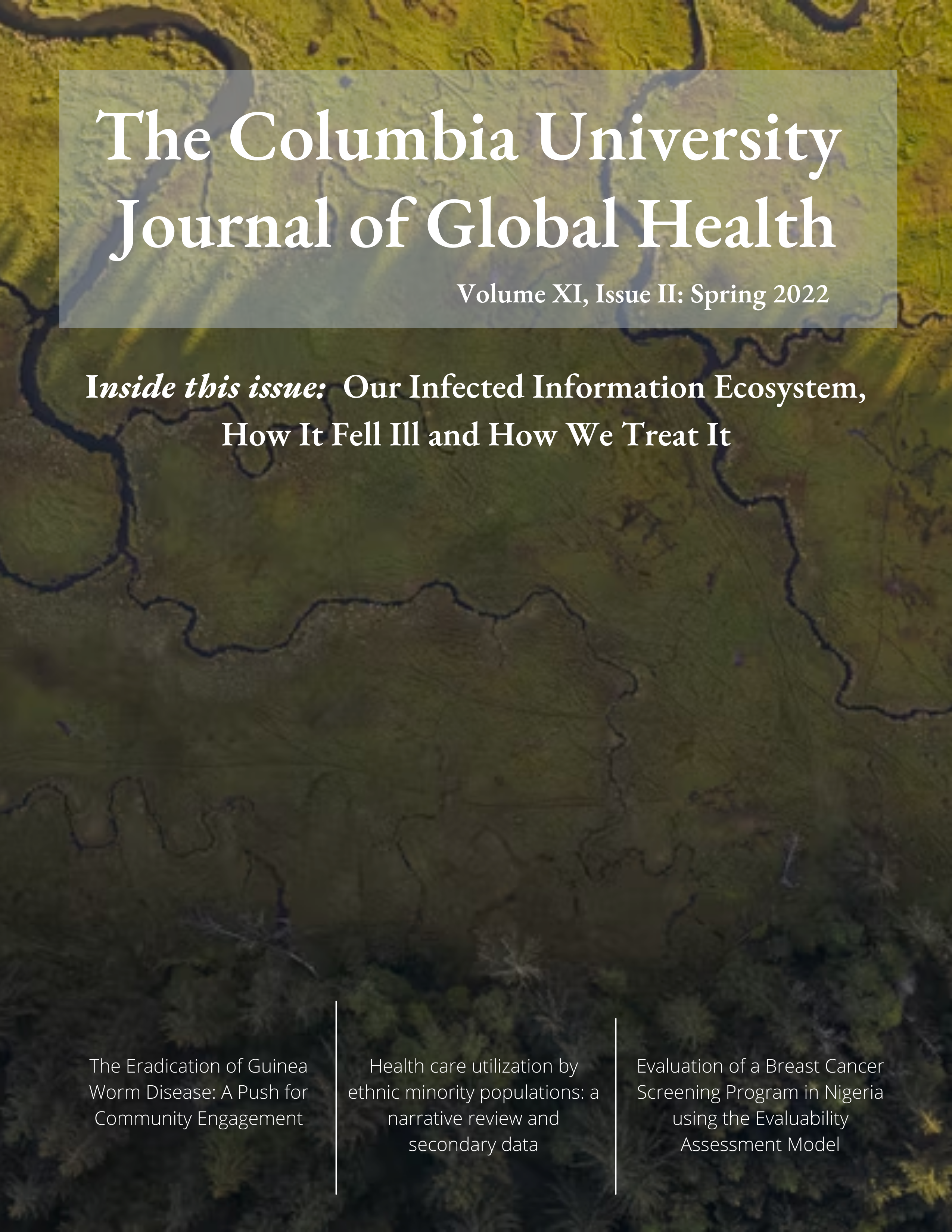The Eradication of Guinea Worm Disease: A Push for Community Engagement
Main Article Content
Abstract
Guinea Worm Disease (GWD) is a neglected tropical disease caused by the nematode Dracunculus medinensis; it has been targeted for eradication since 1980. With only 14 human cases in 2021, GWD may be the first human parasitic disease to be eradicated, even without a vaccine. Current efforts to eradicate GWD face multiple challenges, the largest of which is the lack of access to safe drinking water. Other challenges include the discovery of animal hosts for D. medinensis and the seasonality of transmission. Interventions to address GWD have included water filtration systems, clean water initiatives, and health education programs, among others. Here, we argue that although enormous progress has been made, many studies fail to include a substantive discussion about community engagement. Past GWD eradication efforts have focused heavily on a vertical approach to health, which does not fully encapsulate the needs of affected communities. After reviewing literature on GWD control between 1985 and 2021, we conclude that a final push towards eradication should involve active community engagement.
Article Details

This work is licensed under a Creative Commons Attribution 4.0 International License.

